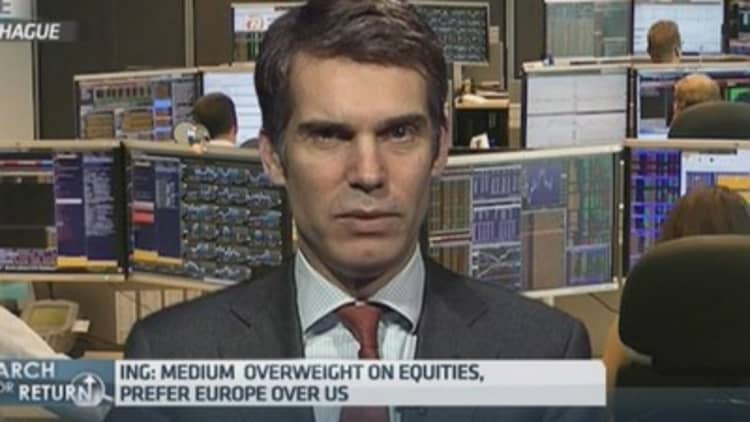
There is growing speculation that the Swiss National Bank (SNB) has set a new target for the country's currency, as the Swiss franc continues to tick lower against the euro.
Swiss newspaper Schweiz am Sonntag reported Sunday that the SNB was aiming to keep the Swissie trading between 1.05 - 1.10 euros ($1.19 - $1.24), citing sources with knowledge of the situation. It comes after the SNB shocked markets by dropping its three-year-old peg of 1.20 Swiss francs per euro on January 15.
Following the decision to scrap the peg, the Swiss franc soared around 30 percent against the euro, as investors piled into the currency which is traditionally seen as a "safe-haven." The currency has been edging lower since the announcement, although it remained over 12 percent higher versus the euro on Monday morning.
New data on Monday also fueled talk that the central bank could be intervening once again, revealing that the amount of cash that banks hold with the SNB rose again last week. These "sight deposits" can be used by the central bank to intervene with its own currency.
A spokesperson for the SNB told CNBC that the bank does not comment on media reports.
Deflationary pressures?
The SNB opted for the peg in 2011 to stave off the threat of deflation, as investors piled into the Swiss franc, which is considered safer than the euro. The peg saw the SNB buy massive amounts of euros to push up the value of the single currency.
However, with the euro depreciating considerably in recent months, the bank said that enforcing the minimum exchange rate was no longer justified and allowed it to appreciate by curbing its euro purchases.
Now, analysts like Sebastien Galy, a senior currency strategist at Societe Generale, believe the bank might have under-estimated the deflationary pressures and could be trying to bring the value of the franc lower once again.
'Big doubts'
The range outlined in Schweiz am Sonntag over the weekend would be more of a "corridor" than a "peg," and would see the currency trading in a tight band. This strategy has been employed by several central banks across the globe, such as the People's Bank of China. The newspaper added that the new target wasn't being communicated publicly.
Valentijn Van Nieuwenhuijzen, head of strategy at ING Investment Management, told CNBC Monday that the unofficial trading band could bring some much needed stability to the currency, which has seen major volatility over the last month.
But despite this, he added that he was "highly doubtful" that the central bank would be intervening to this extent.
"After making that shock announcement, will they really be able to have an increase in credibility and would they really be able to hold on to this new supposed peg?" he said.
"If really committed they could, of course - weakening your currency isn't really that difficult for a central bank - but clearly they have shown in recent weeks that they aren't that committed. So, I have big doubts on that."
The euro was trading at 1.0538 against the franc on Monday morning after trading close to 0.98 shortly after last month's move.


